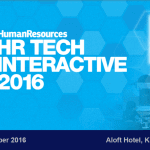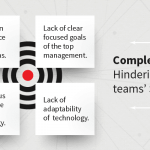What Type of HR Transformation Are You Looking At ?

What Type of HR Transformation Are You Looking At ?
“What got us here the last 100 years will not get us to the next 100 years, so we have to change”, said Levent Arabaci
It wouldn’t be wrong to say the statement stands true in the context of HR as well. HR management today is no more associated with human resources of even last decade. It is, today, on the cusp of transforming the entire professional platform.
Excessive global expansion and the changing characteristics of the workforce is stressing upon the importance of all the verticals of HR. Also, the elevated need to make sure that the organizational talent is not only taken on board but also seen as the strategic partner has fueled the appreciation for HR Transformation which is essential in a journey from HR being an administrative to strategic business partner.
And this transition of Human Resources from an administrative function to a high level strategic function seems to have moved at warp speed since last few years.
If you seem to have a disconnect here, I suggest you take a look at an ocean of articles being shared on social media platforms by HR pros, various HR conferences and events being held throughout the year, and the twitter brimming with #tweetchats of HR professionals across the world. Everything and everyone in this arena is stepping up in the game to bring about a change of wave.
The transformation has begun and it is gaining speed. There is nothing old school HR can do about. It kind of like looking through a photo album from college days, looking at your style and shaking your head because you can’t believe that you dressed or looked like that. That is how future HR professionals will look through an organization’s photo album in the future and marvel at how dated HR was back then.
It will not be easy, but anything worthwhile never is.
And if you’re embarking upon this bold initiative, then you must know that to make such exciting an initiative a reality in human resources, you must first factor in all the business needs and an approach to realize it. Many a time, big changes like HR Transformation are carried out with a clouded understanding of what choices to make to keep the process flexible and aligned with the end business goals.
And at this point, reflecting upon various “types” of transformation would only be a wise step in the direction.
Types of HR Transformation
1. Historical Data Transformation:
It wouldn’t be wrong to say that the term is synonymous with “HRIS”. Earlier known as HRM, technological advancements and the amalgamation of HR with IT has given rise to HRIS: a technology that captures, organizes and integrates historical data into a cloud network where you can develop, access and edit it.
But it isn’t easy as it sounds ! Kicking off any HRIS project raises the question of the amount of historical data that needs to be migrated. While there are many factors to consider, this herculean exercise of fitting old data in the new structures, in my opinion would require an answer to- What is the data going to be used for?
For example:
- While undertaking payroll system, most recent history of information and calculation regulations might be sufficient;
- In case of a Recruitment approach, existing data only, sometimes along with recent candidate roasters should be considered, so to be aligned with data privacy and ownership rules and avoid scrubbing;
- When considering a talent approach, the more data will be available, the more sophisticated the decision ( ignored in most of the execution exercise)
Therefore, depending on the scope under review, the decision will vary, and an understanding of data segments and usage is required to avoid expensive maintenance of the same.
2. System Rip and Replace:
A phrase that send chills down the spine: Rip & Replace. It is exactly what the name implies. It is replacing an old and complex system with one that is flexible, and responsive to changing business needs.
It isn’t a light decision. Such a task demands painful soul searching about what to do with complex legacy systems and clunky applications. And these efforts are extremely disruptive to the business and can be awfully expensive. But there’s a good reason to it as well. When you rip and replace, it means your business is growing and is in need of greater agility in terms of responsiveness to the business change. Thus, it is critical to understand the changing business needs and making sure the people who are in business know the business capabilities before you decide to go for such a transformation type. The HR system selection in the current times is a specialised exercise where :
- An Integrated End to End HR Cloud, important aspect to select such HR cloud will be to validate the sanity of integration between different HR Modules and the HR analytics data it gives out of the box to map the vision of Rip & Replace HR Transformation.
- Best of breed HR Modules, HR Leadership will decide a combination of best of breed systems. Most important aspect of this selection is the level of feature details of each module which is the critical driving factor for the business to select those specialised module.
- A true partner which is not IT, not HR but knows HR and IT equally well by experience to make sure HR process owners are well understood during HR design discussions which can then be translated effectively into the selected HR Cloud or best of breed modules.
3. Process Correction :
In its simplest form, it means successfully building on the legacy systems from yesteryear to establish the cloud-based solutions of today and tomorrow. It also means innovating where required and possible while maintaining and integrating well-functioning components from the past. Simply because you get the job done at the lowest cost possible, or because you want to write off your current investments before you replace them.
Another good reason to go for process correction transformation type is usually when there is no direct path from your current technology state to where you need to be, and that happens.
4. System Adoption :
There’s enormous amount backing the fact that the number of organizations are abandoning legacy applications every year for their lighter, more nimble replacements: cloud applications.
For some organizations, the shift to cloud system adoption is a headfirst dive into total transformation—an entirely new way of working. For others, the transition to the cloud must be gradual. System adoption is mainly a result of:
- Companies striving to create a sustainable competitive advantage for its business and gain access to continuous innovation and industry recommended practices.
- To optimize and integrate new functionality, helping the enterprise to run faster, run smarter and more efficiently than ever before.
Be it any reason, adopting the new HR system reduces operational risks associated with earlier manual processes and provide necessary future scalability to your new functionality.
Point to Ponder:
No matter what transformation type you decide for your organization, its excellence at being effective, efficient and aligned to your business goals depends on one thing that’s the heart of any transformation initiative, i.e., its Relevance ! What CHROs must focus on is starting a conversation with the board which address business priorities, helps in making business case for HR transformation, and its strategic outcomes. Such an approach to relevance must be followed rather than indulging in mere promises to establish a new HR system or a new payroll vendor.
Once you articulate the business goals, and acknowledge that it will be an aid to respond to business challenges, it is a best practice to weigh your efforts aligned towards effective system integration. Whether it’s your first time or the fifteenth time aligning your goals to an integrated system, there’s no choice not to measure the progress of your type system. When business leaders acknowledge that the initiative in hand will address the business challenges, they will undoubtedly want to know how it is an impactful one.
And the definite way to know the relevance as well as the progress of the system is to back it up with the data ! There’s always a “before & after” phase when some change is undertaken. Make the most of it ! Derive stats, compare the scenario, draw conclusions and make the outcomes available to all your company stakeholders. And if turns out to be a successful transformation, what a privilege it would be to be a business leader who can attain goals inclined to refine both the world of industry as well as the world of people !
Good luck on the HR Transformation journey!


